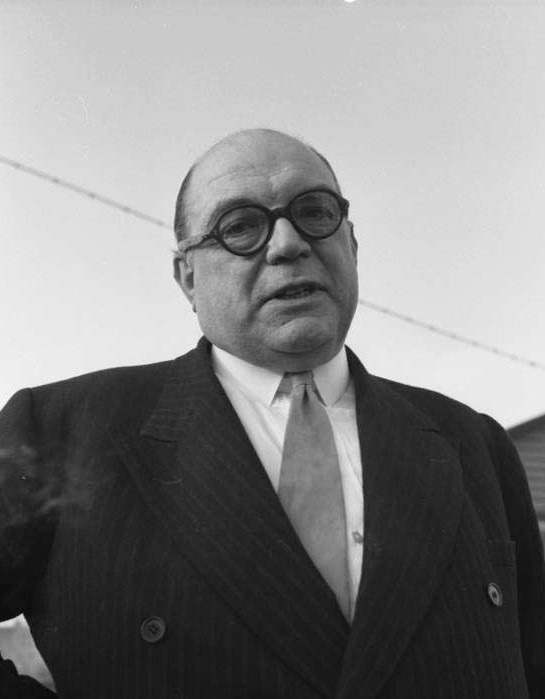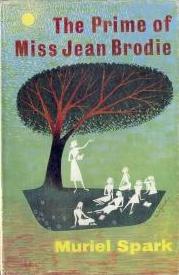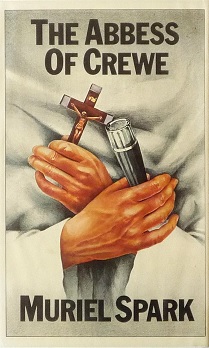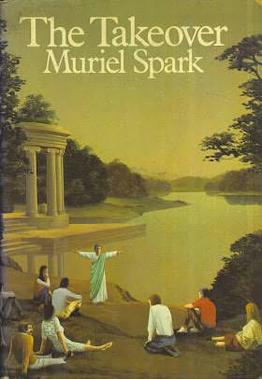Discarding history for mythology: Muriel Spark’s mythologizers
Beatriz Lopez explores how Muriel Spark’s foremost mythologizers employ WWII myth-making techniques to impose their delusional understandings of the world on reality.
Sefton Delmer’s second volume of autobiography Black Boomerang (1962) begins in a Frankfurt cinema in 1960. Delmer is watching a wartime thriller which shows the German army arduously fighting both the Allies and the Nazi party, implying that most Germans were really against Hitler. This myth of ‘the good upright patriotic Germans of the Wehrmacht being the bitter enemies of the Nazi Party and the Gestapo’, concocted by the PWE during the Second World War, continued to haunt post-war Germany.[1] Originally designed to destroy Hitler, the myth had been ironically transformed into a vindication of German righteousness, showing the perilous ‘boomerang’ effect resulting from plausible narratives becoming naturalized and accepted as absolute truths.

Although myth-making is a practice most often associated with totalitarian regimes, Delmer’s cinematic anecdote demonstrates that this was by no means the case. In fact, the PWE was instrumental in the creation of myths to further the Allied cause, some of which became enacted or tested in reality. The PWE’s black radio station Soldatensender Calais, for example, exploited the feelings of those German officers’ corps leaders who were becoming disenchanted with Hitler’s thirst for war and longed for the establishment of peace with the West: ‘We had been seeking to suggest to them that all they had to do was to overthrow Hitler for us to be ready to start peace negotiations’.[2] To Delmer’s surprise, this offer was taken up by the officers in what became known as the ‘Peace Putsch’, an unsuccessful revolt against Hitler which cost them their lives.[3] Otto John, a survivor of the operation who was later employed by Delmer, reported ‘that [their] broadcasts had indeed been heard by the conspirators, and interpreted in precisely the sense [Delmer] had hoped.’[4]

Muriel Spark was part of a generation of post-war novelists who explored the magnetic influence of myth-makers and the ways in which they can lead others to enact dangerous myths in reality. Iris Murdoch’s The Flight from the Enchanter (1956) and John Fowles’ The Magus (1965) exemplify this trend. Yet Spark’s PWE experience informs the myth-making techniques that pervades her oeuvre, particularly in The Prime of Miss Jean Brodie (1961), The Abbess of Crewe (1974) and The Takeover (1976).

In The Prime of Miss Jean Brodie, charismatic teacher Miss Brodie embraces an aesthetic understanding of the world, illustrated by her belief that ‘Goodness, Truth and Beauty come first [than Safety]’ and that ‘Art comes first and then science.’[5] Her mythological method of ‘making patterns with facts’[6] resembles that of totalitarian leaders who ‘choose[s] those elements from existing ideologies which are best fitted to become the fundaments of another, entirely fictitious world.’[7] For example, Miss Brodie first introduces her ex-lover as a Robert Burns-like poet before endowing him with the attributes of her new love interests, the art teacher Mr. Lloyd and the music teacher Mr. Lowther: ‘Sometimes Hugh would sing, he had a rich tenor voice. At other times he fell silent and would set up his easel and paint.’[8] Miss Brodie has elected herself to grace as ‘the God of Calvin’ who ‘sees the beginning and the end’[9] and therefore pays no attention to morals when exercising her sense of predestination. Yet Sandy Stranger soon recognizes the failures of her omniscience and the problematic nature of her myth-making.
For instance, Miss Brodie’s plot of Rose sleeping with Mr. Lloyd backfires when Sandy becomes Mr. Lloyd’s lover, leading Sandy to feel ‘more affection for her in her later years […] when she thought upon Miss Brodie as silly.’[10] Miss Brodie also imposes dangerous ‘heroic futures’ on her students; trying ‘to inspire Eunice to become at least a pioneer missionary in some deadly and dangerous zone of the earth’, encouraging Rose to become Mr. Lloyd’s lover on her behalf, and, most alarmingly, ‘urging young Joyce Emily to go to Spain to fight for Franco’ with deadly consequences.[11] On realizing that the end result of Miss Brodie’s plotting is the enactment of the imagination upon reality, Sandy ends up reporting Miss Brodie’s fascism to the headmistress, thereby ‘putting a stop to Miss Brodie.’[12]
Another of Spark’s mythologizers, Sister Alexandra in The Abbess of Crewe, believes that her destiny is to become Abbess. In her attempts to persuade her fellow nuns to support her claim, she propagandistically discards history for mythology:
Here, in the Abbey of Crewe, we have discarded history. We have entered the sphere, dear Sisters, of mythology. My nuns love it. Who doesn’t yearn to be part of a myth at whatever the price in comfort? The monastic system is in revolt throughout the rest of the world, thanks to historical development. Here, within the ambience of mythology, we have consummate satisfaction, we have peace.[13]

In this mythological realm, truth is no longer subject to referential claims. In order to get elected as Abbess and direct attention away from the scandal of Sister Felicity sleeping with a Jesuit, Abbess Alexandra selects those ‘facts’ which are relevant to her point of view in order to craft plausible narratives to suit the occasion. Like Miss Brodie, Abbess Alexandra is a myth-maker who imposes her imagination on others. For example, she forces Sister Gertrude to cope with the story of her having been sent on a mission by the Abbey because ‘[s]he fits the rhetoric of the occasion’[14] and nastily misrepresents Sister Felicity’s ideas of freedom and love when arguing that Felicity ‘wants an open audit of all the dowries and she advocates indiscreet sex.’[15] In doing so, Abbess Alexandra embraces an aesthetic understanding of faith which clashes with Felicity’s down-to-each approach: ‘Felicity will never see the point of faith unless it visible benefits mankind.’[16] Her inability to face reality eventually leads to her potential excommunication by Rome. As Sister Gertrude warns her, mythological garble may suit the media, but ‘[i]n Rome, they deal with realities.’[17] In a final flight from history, Abbess Alexandra is aesthetically rendered as a tape of her selected transcripts, entitled The Abbess of Crewe. She has become ‘an object of art, the end of which is to give pleasure.’[18]

The Takeover opens with Hubert Mallindaine living in a beautiful house by Lake Nemi, property of wealthy American Maggie Radcliffe. In order to gain prestige and power, Hubert has unproblematically accepted his eccentric aunts’ claim that they are in fact the descendants of Goddess Diana of Nemi. Like Abbess Alexandra, Hubert’s belief in the subjectivity of reality leads him to manufacture it for his benefit. Reacting against the ontological realism of the Jesuit priests he encounters, Hubert claims that absolute truths do not exist and therefore ‘[a]ppearances are reality’.[19] Following this principle, Hubert uses his ancestral claim to create a religious cult of Diana and establish himself as high priest. However, when his secretary Pauline inopportunely unearths ‘evidence that his aunts, infatuated by Sir James Frazer and his Golden Bough […] had been in correspondence with the quack genealogist [and] instructed him in the plainest terms to establish their descent from the goddess Diana’, Hubert tenaciously evades this documentary evidence. In doing so, he emphasises the importance of self-confidence in the practice of deception because ‘it frequently over-rides with an orgulous scorn any small blatant contradictory facts which might lead a simple mind to feel a reasonable perplexity and a sharp mind to feel definite suspicion.’[20]
This belief mirrors Hitler’s idea of the ‘big lie’, a falsity so colossal that the masses ‘will not be able to believe in the possibility of such monstrous effrontery and infamous misrepresentation in others.’[21] Hubert’s mythological lineage is blatantly fake, yet it has such aesthetic power that it enchants not only his neighbours, many of which become members of the flock, but the myth-maker himself:
‘[H]e had got into a habit of false assumptions by the imperceptible encroachment of his new cult; so ardently had he been preaching the efficacy of prayer that he now, without thinking, silently invoked the name of Diana for every desire that passed through his head, wildly believing that her will not only existed but would certainly come to pass.’[22]
Notes
[1] Sefton Delmer, Black Boomerang: An Autobiography: Volume Two (London: Secker & Warburg, 1962), 11.
[2] Ibid., 120.
[3] Ibid., 121.
[4] Ibid., 121.
[5] Muriel Spark, The Prime of Miss Jean Brodie (Edinburgh: Polygon, 2018), 7; 22.
[6] Ibid., 71.
[7] Hannah Arendt, The Origins of Totalitarianism (Cleveland and New York: Meridian Books, 1958), 361-2.
[8] Spark, The Prime of Miss Jean Brodie, 71.
[9] Ibid., 121.
[10] Ibid., 112.
[11] Ibid., 61; 124.
[12] Ibid., 125.
[13] Muriel Spark, The Abbess of Crewe (Edinburgh: Polygon, 2018), 9.
[14] Ibid., 19.
[15] Ibid., 33.
[16] Ibid., 26.
[17] Ibid., 86.
[18] Ibid., 86.
[19]Muriel Spark, The Takeover (Edinburgh: Polygon, 2018), 90.
[20] Ibid., 131-2.
[21] Adolf Hitler, Mein Kampf [My Struggle] (Boston, MA: Houghton Mifflin Company, 1943), 231-2.
[22] Spark, The Takeover, 182-3.
